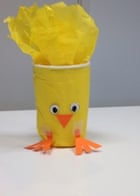27 марта в Мариинском дворце Санкт-Петербурга в рамках VI Петербургского образовательного форума состоялось Всероссийское совещание руководителей органов исполнительной власти субъектов Российской Федерации, осуществляющих управление в сфере образования.
Глава Минобрнауки России рассказал коллегам из региональных органов управления образованием о необходимых мерах по дальнейшему увеличению зарплат педагогов, подготовке к празднованию 70-летия Победы, достижению 100% доступности дошкольного образования, совершенствованию контроля за качеством школьного образования.
Дмитрий Ливанов особо подчеркнул, что воспитанию в школе сейчас уделяется повышенное внимание. «Система образования уже включилась в работу по подготовке к празднованию 70-летия Победы, – отметил Министр. – Мы готовы поддержать интересные инициативы регионов в этом направлении, принять участие в их мероприятиях».
Дмитрий Ливанов рассказал, что 8 апреля в режиме видеоконференцсвязи Министерство будет проводить «Урок Победы» с прямыми включениями из Москвы, Санкт-Петербурга, Волгограда, Севастополя, Курска. Таким образом будет дан старт месячнику Победы в системе общего образования. «Мы рассчитываем, что в нем примут участие все образовательные организации России», – сказал Министр.
Одной из ключевых тем совещания стало обсуждение государственной итоговой аттестации. Дмитрий Ливанов сообщил, что сейчас обсуждается вопрос о поэтапном увеличении выпускных экзаменов в 9 классе. В 2016 году предложено увеличить их число до четырех, к 2018 году – до пяти, в 2020 году – до шести.
«На мой взгляд, помимо русского языка и математики, обязательным в 9-м классе мог бы стать и экзамен по иностранному языку – тем более что он будет обязательным с 2020 года в 11-м классе», – отметил глава Минобрнауки.
Также Министр сообщил, что с 2017 года оценки за экзамены за 9-й класс планируется выставлять с помощью федеральной шкалы, и они будут влиять на оценку в аттестате.
«Крайне важно, чтобы в 2015 году единый экзамен прошел максимально объективно, на высоком организационном уровне», – подчеркнул Дмитрий Ливанов. Министр призвал региональных коллег со всей ответственностью отнестись к решению этой задачи. «В прошлом году был предпринят ряд мер для обеспечения честности и объективности экзамена, это во многом удалось, и теперь мы не должны опускать планку. Проведение ЕГЭ в феврале этого года, а также досрочная волна показали, что со стороны регионов еще не все организационные вопросы решены», – сказал Министр.
В 2014/2015 учебном году впервые после долгого перерыва 11-классники написали выпускное сочинение – по его результатам будут подготовлены методические рекомендации, которые, в том числе, будут направлены на совершенствование преподавания литературы в школе.
Дмитрий Ливанов также рассказал о том, что с 2016 года предполагается начать апробацию системы федеральных контрольных работ, которые давали бы единую и непредвзятую картину качества образования на промежуточных этапах обучения, а не только в 9-х и 11-х классах. «Это позволит детям привыкнуть к ситуации экзамена и избегать лишних стрессов на ГИА и ЕГЭ, а педагогам поможет при необходимости скорректировать процесс обучения, подтянуть отстающих», – отметил Министр.
Также Дмитрий Ливанов обратил внимание руководителей органов исполнительной власти субъектов РФ, осуществляющих управление в сфере образования на то, что на 1 марта 2015 года средний показатель доступности по стране дошкольного образования составил около 95% и в соответствии с указом Президента РФ осталось 9 месяцев для обеспечения 100% доступности дошкольного образования для детей от 3 до 7 лет. Министр рекомендовал регионам усилить работу по данному направлению и к концу 2015 года сделать все необходимое для создания 350 тыс. мест для дошкольников.
На совещании также рассматривался вопрос об увеличении заработной платы педагогов.
«В 2015 году в сложных экономических условиях мы должны обеспечить сохранение достигнутых результатов по увеличению зарплаты педагогов дошкольного и общего образования. Это можно сделать, в том числе, за счет пересмотра траектории повышения зарплат педагогов дополнительного образования детей, педагогов СПО, допустив некоторое снижение целевых соотношений, но сохранив номинальный уровень зарплат этих категорий работников. Педагогическая профессия должна оставаться привлекательной, в педагогические вузы должны идти хорошо подготовленные абитуриенты, а на работу в школы – лучшие выпускники педагогических вузов», – резюмировал Министр.





